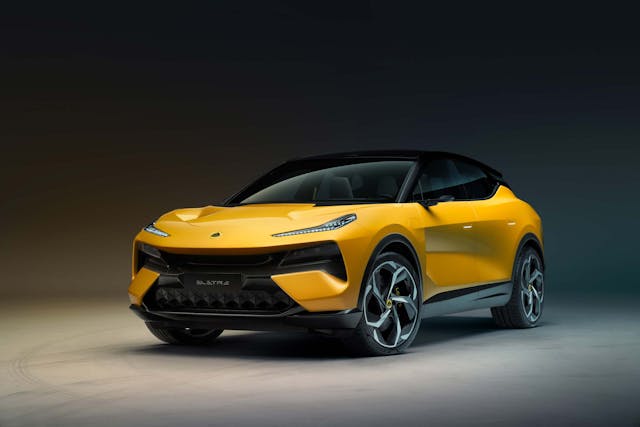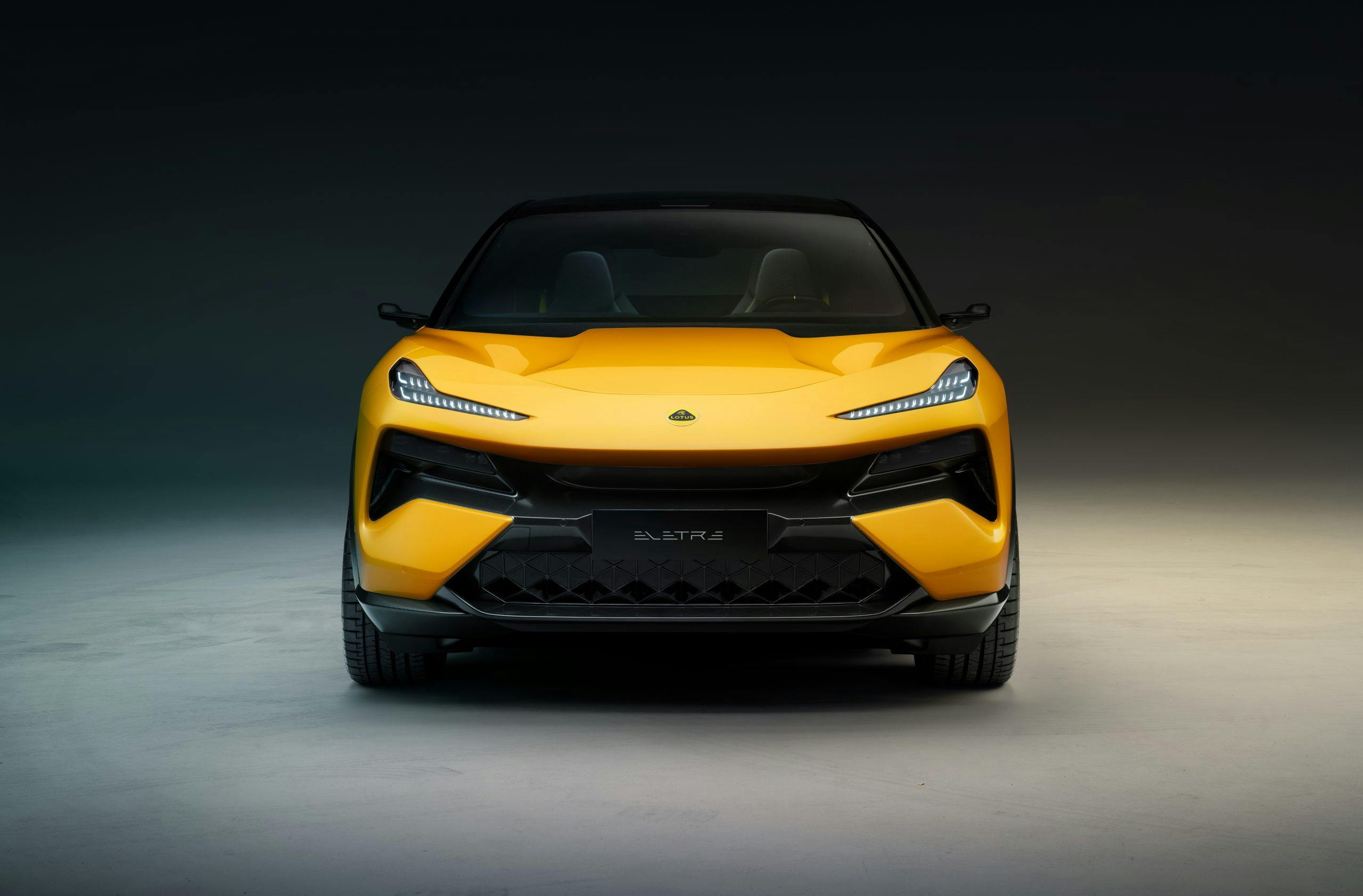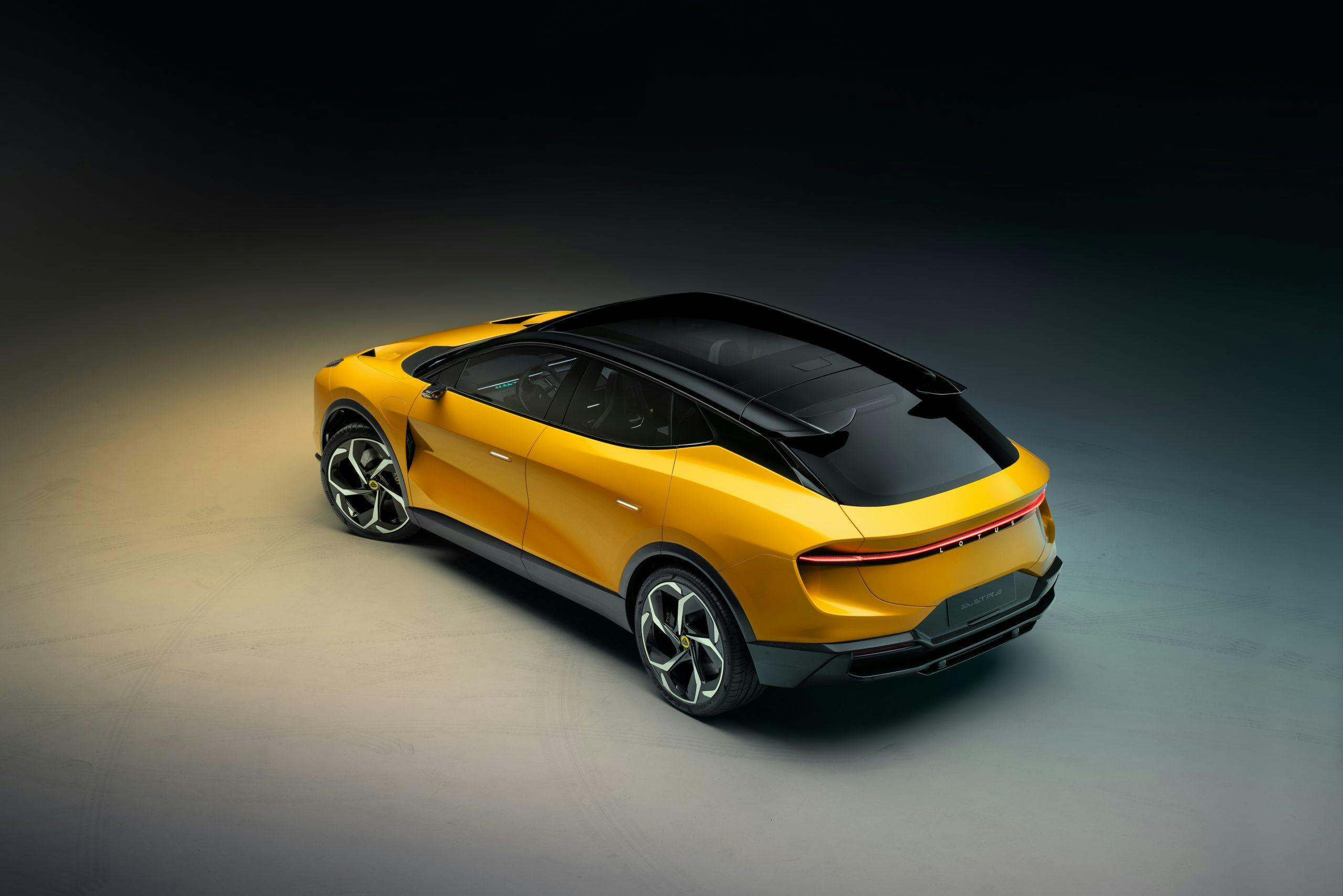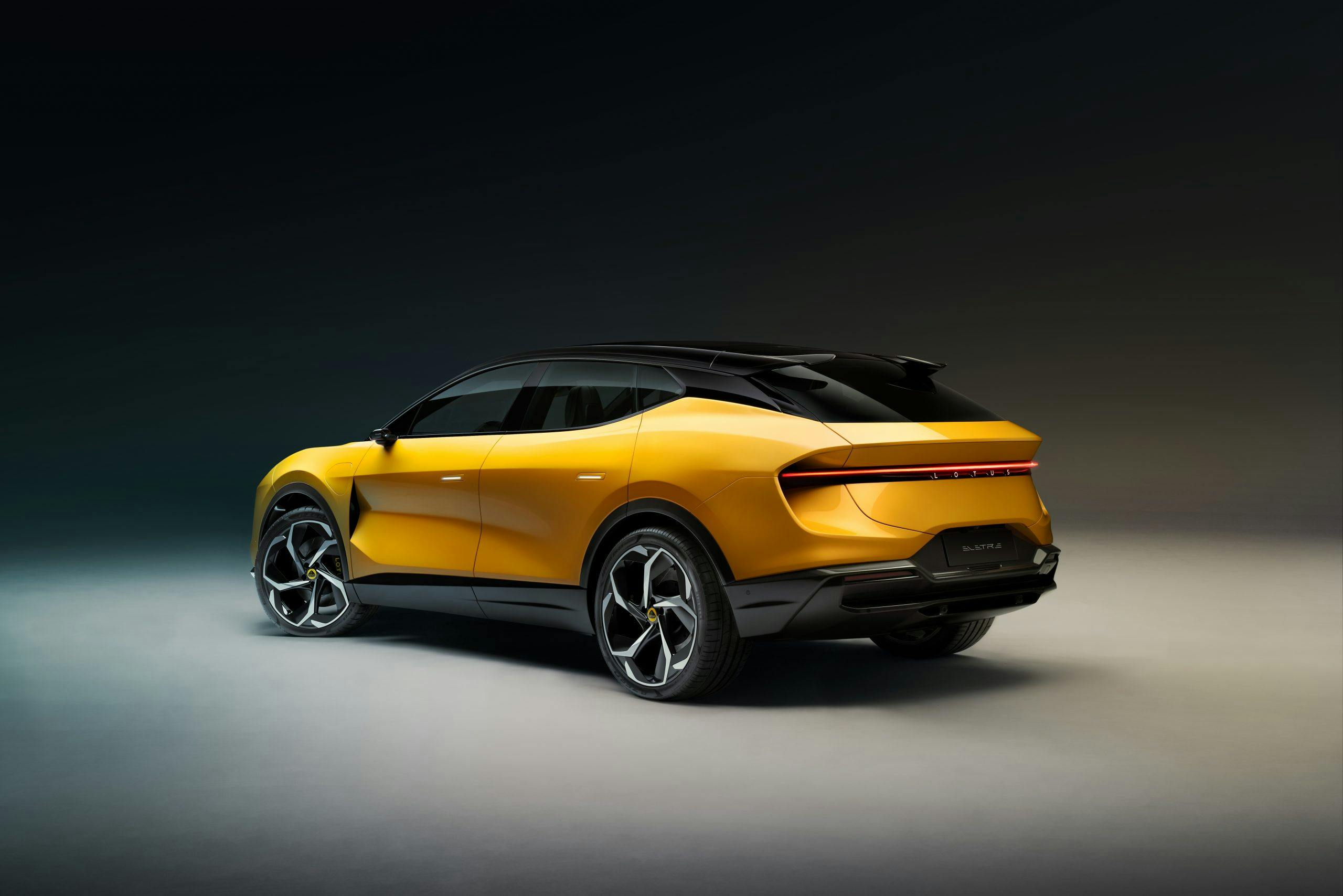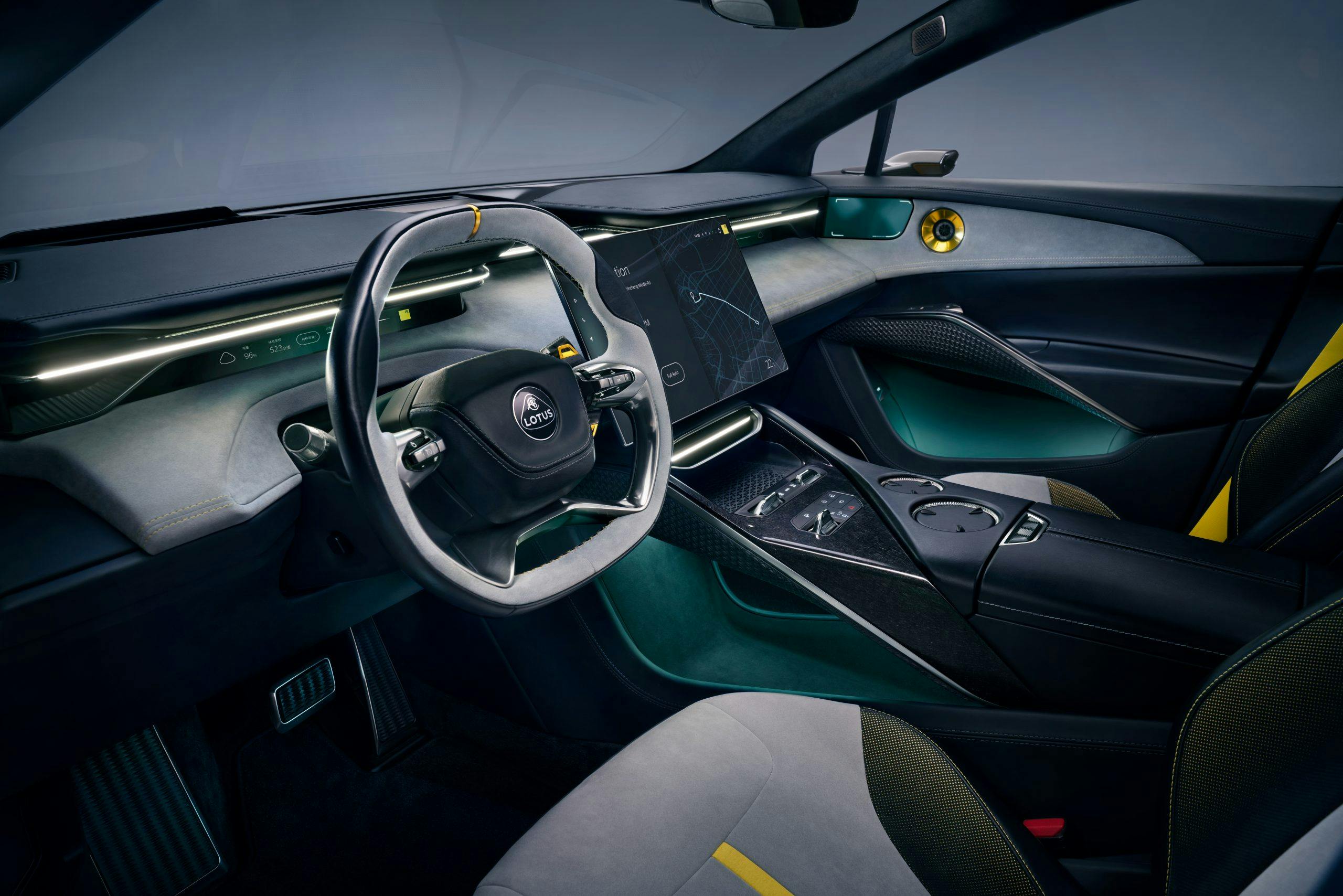Eletre: The first Lotus SUV is a 600-hp EV
“We know the world is watching so there has been an obsession with getting everything just right,” says Gavan Kershaw. Kershaw’s title is Director, Attributes and Product Integrity at Lotus, but everyone knows him as the British brand’s ride and handling guru. Kershaw, like everyone else at Lotus—from its U.K.-based Managing Director Matt Windle to Group Lotus’ Chinese CEO Qinqfeng Feng—knows there’s a massive amount riding on the new Eletre.
It’s a car of many firsts: the first five-door Lotus, the first Lotus that isn’t a sports car, the first mass production EV and the first to built outside of the company’s historic base in Norfolk. With all that in mind, many will be asking whether the Eletre SUV is really a Lotus at all.
“It remains a true Lotus,” insists the media material, “a beautiful car ‘carved by air’, packed with pioneering technology, genuine sporting performance and simplicity of purpose, designed and developed by a passionate and global team. The Lotus Eletre is alive with character and personality.”
Let’s start with the character. Design studio boss Ben Payne says it comes from “embodying emotion, intelligence and prestige,” that sets the standard for two further lifestyle EVs that will follow. “We have taken the iconic design language of the Lotus sports car and successfully evolved it into an elegant and exotic Hyper-SUV,” he adds.
A key technical component of the SUV’s design is a “porosity” that allows air to flow through, under, over, and around the Eletre. This design trait was pioneered by the Evija electric hypercar. The relatively short nose channels air under its leading edge and lets it out through exit vents in the hood. Further inlets and outlets sit either side of the front and rear wheels and the top of the D-pillar. Aerodynamic efficiency is the name of the game with minimalist, near-hidden lighting and an active front grille with “petals” that open for cooling or close to reduce drag. Wind-cheating cameras are used in place of mirrors and a truly unique two-part floating rear roof spoiler all contribute to the car’s ability to cut through the air, while also accessorizing a profile that might not otherwise stand out in a crowded high-end SUV market. Bright colors work best, emphasizing the greenhouse which is picked out in contrasting back, like the Evija and Emira.
The Eletre is “the most connected Lotus ever” and that’s immediately apparent from the huge central landscape-oriented 15.10-inch OLED digital display that dominates the cabin. There’s an emphasis here on sustainable materials, with man-made microfiber for the dash and door trims, while the seats use a wool blend fabric. Carbon fiber is also used throughout, notably in the floating center console and a panoramic glass roof that floods the interior with light. With spacious seating for four, the interior certainly looks pretty state of the art, and the technology suite is set to match. British audio brand KEF supplies the hi-fi and as standard there’s a 138-watt 15-speaker setup, while a 23-speaker 2160-watt “reference” system is an option. This is an EV that can bring the noise.
Lotus says that the infotainment system has been designed to be as simple to use as possible, with a “lightweight” UX that means 95 percent of the car’s functionality can be accessed with no more than three touches of the main screen. Among the features that can be controlled are a suite of Advanced Driver Assistance Systems (ADAS) which use the car’s LIDAR system with its front and rear sensors only deployed when in use. The list of driver aids is long and includes adaptive cruise control, traffic sign recognition, lane keep assists, and lane change assist plus assorted collision warnings and mitigations.
The true personality of any Lotus is the way that it responds to the road and driver inputs, not the way it autonomously pilots itself, however. That means the car’s new platform and powertrain will be under the most scrutiny. Underpinning the Eletre is an 800-volt architecture with electric motors for the front and rear axles, both with a three-in-one drive system integrating a controller and reducer with the motor to reduce weight and size. With a battery pack upwards of 100 kWh in capacity and a starting power output of 600 hp the Eletre is claimed to take less than three seconds to reach 62 mph and achieve a top speed of over 160 mph. Range, according to the European WLTP cycle is 373 miles.
The Eletre will clearly perform well in a straight line, but the true test of any Lotus is its ride and handling. Although the actual weight of the Eletre is conspicuous by the figure’s absence in the launch material, this will certainly be the heaviest car ever to wear the green and yellow initials of Colin Chapman on its nose. Air suspension with active ride height, rear-axle steering, active anti-roll bar, and torque vectoring are the tools in place to help master the mass of the Eletre and make it live up to the Lotus legend.
“It’s a world-class product and a true Lotus,” insists Gavan Kershaw. Time will tell.
